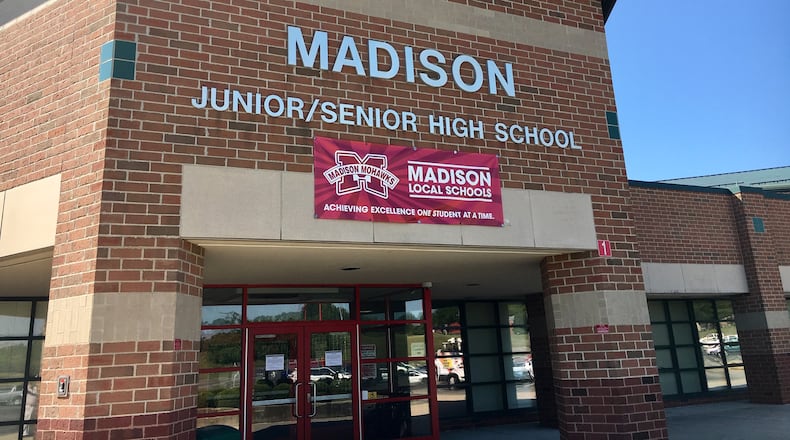The Madison school tax was the only local school issue in Butler County on the Tuesday’s ballot.
Across Ohio, according to officials with the Ohio School Board Association (OSBA), voters across Ohio approved 65% of the school tax issues on the 2022 primary election ballot.
The passage of 49 of 75 issues marked a small decrease from the 2021 primary election, when voters approved 50 of 73 school tax issues for a passage rate of 68%, according to the OSBA.
Thirty-eight percent of new school tax requests were approved Tuesday, May 3, with 13 of 34 issues passing, a decrease from 2021. In last year’s primary election, voters approved 20 of 40 new tax issues for a 50% passage rate.
But for Madison school officials, the ballot defeat was extension of the district’s own streak it desperately had hoped to end.
It has been 21 years since Madison schools saw residents approve a new school income tax for daily school operations.
“The results of the election (Tuesday) are disappointing,” said Madison Schools Superintendent Jeff Staggs.
“The board of education and I will determine when this issue should be re-voted on. We still need new funds. We will have to assess what cuts in staffing and programs must be made for the district’s immediate future,” said Staggs, who oversees the 1,600-student school system with a single, K-12 campus.
Sandy Creach, treasurer for the pro-school tax campaign, said residents’ concerns over inflation and a rocky economy helped lead to the defeat of the proposed school income tax increase.
“It’s because of the economy right now,” Creach said.
“Everything is so high. Gas is high and groceries are terribly high and prices have gone up on everything,” she said.
Madison Fire Chief Kent Hall said his department will now have to meet with township trustees to decide what actions will be taken next to try and get more local, tax-payer funding for the fire and EMS crews.
“Thought the defeat of the fire levy was closer than that of the schools, it still means the department will now face personnel cuts to an already lean fire department, said Hall.
“We’re going to have to (meet) with the trustees and see what Plan B will be. We have some immediate needs on the fire end and EMS with apparatus and buildings.”
Residents who spoke to Hall while he was at the polls often cited their concerns about inflation, he said.
“That was the main thing they were talking about with everyday issues like inflation and cost of everything going up and the unknowns,” Hall said.
He said the township used to be served by 55 to 60 volunteer firefighters, but that number has dropped to 40 to 45 and that include part-time EMS.
“It comes down to more staffing around the clock and faster response times for medical and fire-related calls,” Hall said previously.
About the Author

